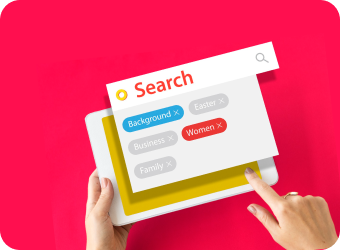What Are Google Topics?

It’s The Rise of 1st Party Data: Navigating the Post-Third-Party Cookie Era
The digital advertising landscape is undergoing a significant transformation with the disappearance of third-party cookies. In response to this shift, Google has introduced a revolutionary concept called "Google Topics" that enables businesses to harness the power of first-party data. In this article, we will explore what Google Topics is, its significance in the post-third-party cookie era, and how utilizing a 1st Party QR code can help businesses assign audiences while collecting invaluable first-party data.
The Demise of Third-Party Cookies
Third-party cookies, once the backbone of digital advertising, are on the brink of extinction. Privacy concerns, regulations, and growing user awareness have led to this inevitable change. With the disappearance of third-party cookies, marketers are left searching for alternative methods to target their audiences effectively. This is where Google Topics enters the stage.

It’s The Rise of 1st Party Data: Navigating the Post-Third-Party Cookie Era
The digital advertising landscape is undergoing a significant transformation with the disappearance of third-party cookies. In response to this shift, Google has introduced a revolutionary concept called "Google Topics" that enables businesses to harness the power of first-party data. In this article, we will explore what Google Topics is, its significance in the post-third-party cookie era, and how utilizing a 1st Party QR code can help businesses assign audiences while collecting invaluable first-party data.
What is Google Topics?
Google Topics is Google's innovative solution to address the impending void left by third-party cookies. It revolves around creating "audience buckets" by using first-party data. Google's algorithms analyze user behavior on websites, helping businesses understand their audiences better, while respecting user privacy.
The Significance of 1st Party Data
First-party data is the gold standard in the new era of digital advertising. Unlike third-party data, which relies on external sources, first-party data is collected directly from your audience. This data is incredibly valuable because it provides a deeper understanding of your customers, their preferences, and behaviors.
The key benefits of first-party data are:
- Improved Personalization: First-party data allows businesses to deliver highly personalized content and advertisements. This leads to increased engagement and higher conversion rates.
- Enhanced Trust and Privacy: By collecting data directly from your audience, you build trust and maintain user privacy. Users are more likely to share information with a brand they trust.
- Data Ownership and Control: You have complete control over your first-party data, reducing reliance on external data providers.

How to Utilize 1st Party Data with the 1st Party QR Code
One innovative method for collecting first-party data is by using a 1st Party QR code. This QR code links directly to your website, encouraging users to scan it and interact with your content. By implementing this strategy, you can collect data while delivering a seamless and personalized experience to your audience. Here's how to use a 1st Party QR code effectively:
- Create a Branded QR Code: Design a QR code that aligns with your brand's aesthetics to encourage users to scan it.
- Incentivize Scanning: Offer incentives like discounts, exclusive content, or early access to encourage users to scan the code.
- Collect Data Responsibly: Use the data collected from the QR code ethically and transparently. Ensure that users are aware of how their data will be used.
- Analyze and Optimize: Regularly analyze the data collected to refine your marketing strategies and improve the user experience.
Conclusion
As third-party cookies fade into obsolescence, businesses must adapt to new strategies for audience targeting. Google Topics, coupled with the collection of first-party data using 1st Party QR codes, offers a powerful solution to this challenge. Embracing first-party data not only enhances audience understanding but also promotes trust and privacy. In this evolving digital landscape, your data collection strategies will be your guiding star. Embrace the change, and you'll find new and exciting ways to engage with your audience, build trust, and thrive in the digital world. Click here For a searchable list of Google Topics

